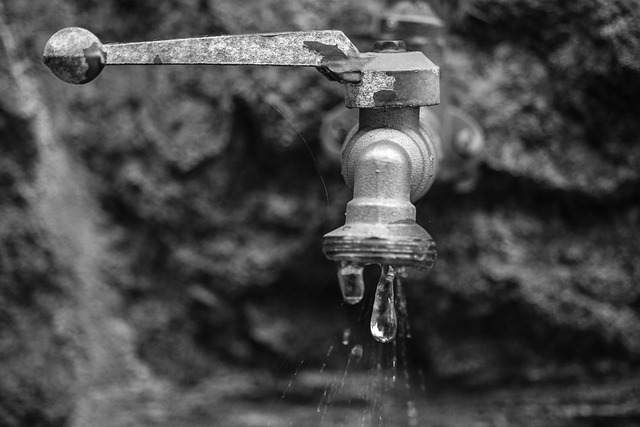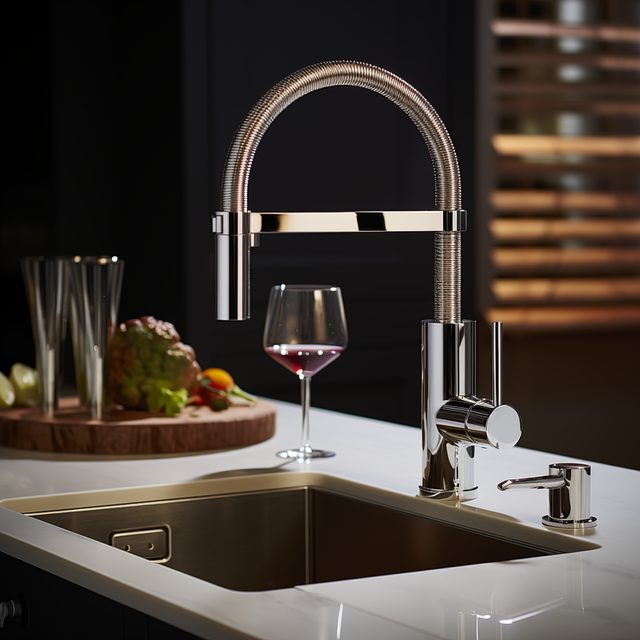Leaky faucets, caused by worn parts or loose connections, waste water and raise utility bills. Identify the issue (e.g., washer, O-ring, valve seat) using the right tools, including Teflon tape for watertight seals. Gather replacement parts suited to your faucet's type and design. For simple fixes, DIY methods can save money; however, complex problems may require professional plumbers for durable solutions and expert advice. Regular maintenance, such as tightening components and applying plumber's grease, prevents future leaks. Eco-friendly alternatives like low-flow aerators and recycled parts promote water conservation and sustainability.
Tired of that persistent drip, drip, drip? Don’t fret—fixing a leaky faucet is easier and more affordable than you think. This comprehensive guide walks you through understanding common causes, gathering the right tools, identifying your faucet type, and step-by-step repair instructions. From troubleshooting tips to eco-friendly alternatives, learn how to tackle even severe damage effectively and save on professional services. Master the art of leaky faucet fix and watch those water bills drop!
Understanding Common Causes of Leaky Faucets

Leaky faucets can be a common household issue, often stemming from various factors that require attention to effect a lasting leaky faucet fix. The most prevalent causes include worn-out or damaged washer and valve seats inside the faucet, loose connections between pipes and fittings, and corroded parts. Over time, these components weaken, allowing water to escape through gaps, leading to the constant drip that not only wastes water but also increases your utility bills.
Identifying the specific cause is crucial in determining the appropriate leaky faucet fix. For instance, if the issue lies with worn-out washers or seats, replacing them can be a straightforward DIY project. However, complex problems like corroded pipes or tight connections might necessitate professional plumbing services to ensure effective and lasting repairs, preventing further damage or complications.
Gather the Necessary Tools and Materials

Before tackling any leaky faucet fix, it’s crucial to gather the right tools and materials. For a standard leaky faucet, you’ll likely need pliers, a wrench (often adjustable), Teflon tape, and a replacement washer or O-ring. These items are readily available at your local hardware store.
Teflon tape is a game-changer for many leaky faucet fixes. It creates a watertight seal by coating the threads of the faucet, preventing leaks where the faucet meets the sink or pipe. Remember, using the correct tools and materials significantly improves the chances of a successful leaky faucet fix, ensuring water conservation and avoiding further damage.
Identifying the Type of Faucet You Have

Before tackling any leaky faucet fix, it’s crucial to identify the type of faucet you have. This is because different faucets—from single-handle to two-handle models and various styles—may require distinct repair methods. Take a close look at your faucet; note its design, the number of handles, and any unique features or markings. This information will help guide you in choosing the appropriate parts and tools for your leaky faucet fix.
Once you’ve determined the type of faucet, consider the common causes of leaks—like worn-out O-rings or cartridges—and gather the necessary replacement parts. Many leaky faucet fixes can be done with relative ease by a DIYer, but if you’re unsure or face complex issues, don’t hesitate to consult a professional plumber for expert assistance.
Step-by-Step Guide to Fixing a Leaky Faucet

Fixing a leaky faucet is an easy DIY project that can save you money and reduce water waste. Start by turning off the water supply to your faucet under the sink. This typically involves closing the shut-off valves located on either side of the faucet. Next, gather the necessary tools: pliers, a wrench, and a replacement washer or O-ring (available at any hardware store). Remove the faucet handle and inspect the components beneath. The leak usually stems from the washer or O-ring, which can be easily replaced. Simply unscrew the old parts, install the new ones, and tighten the screws. Ensure all parts are securely fastened before reattaching the faucet handle. Test the fixture by turning on the water supply and checking for any leaks. If the problem persists, consult a professional plumber for further assistance.
Troubleshooting Tips for Persistent Leakage

If your leaky faucet persists despite initial attempts at a DIY repair, it might be time to consider more advanced troubleshooting techniques. Start by inspecting the faucet’s O-ring or washer, as these are common culprits for continued leakage. Replace these parts if they appear worn out or damaged. Ensure proper seating and alignment during installation; a slightly off-kilter component can lead to persistent leaks.
Next, check the faucet’s valve seat and stem. Over time, these parts can become contaminated with mineral deposits or debris, leading to a loose fit. Try cleaning them thoroughly using a mixture of vinegar and water, then replace if necessary. If the problem persists, it may indicate a faulty cartridge or valve assembly, requiring professional attention for a complete leaky faucet fix.
When to Call in a Plumber: Signs of Severe Damage

If you’re dealing with a leaky faucet, there are often simple DIY fixes that can be performed to get it back in order. However, there will come a time when these quick remedies aren’t enough and severe damage may have occurred. Knowing the signs of when to call in a professional plumber is crucial for addressing potential plumbing issues. One of the clearest indicators is if the leak has caused significant water damage or if you notice mold growth around the faucet area. Another red flag is an excessive flow rate, suggesting that the problem might be with the internal parts of the faucet, which require specialized tools and expertise to repair.
Additionally, if the faucet’s structure appears corroded, rusted, or significantly worn out, it could signal a need for complete replacement, which should be handled by a plumber to ensure proper installation and maintain the integrity of your plumbing system. Remember, while DIY methods can help with minor leaky faucet fixes, complex issues may require professional intervention to prevent further complications.
Cost-Effective Solutions vs. Professional Services

When it comes to addressing a leaky faucet, homeowners often face a choice between attempting cost-effective solutions themselves or enlisting the services of a professional plumber. While DIY repairs can be satisfying and pocket-friendly for minor issues, complex leaks might require specialized knowledge and tools. Plumbers possess the expertise to pinpoint the root cause, whether it’s an old washer, damaged O-ring, or faulty valve seats. They can also ensure long-term reliability by offering durable replacement parts and expert advice tailored to your specific faucet model.
Choosing a leaky faucet fix based on cost is understandable, but it’s essential to weigh the potential benefits of professional service. A quick, temporary fix might save money initially, but repeated repairs or an overlooked problem could lead to higher long-term costs. Professional plumbers can offer lasting solutions, saving you time and resources in the future.
Maintenance Tips to Prevent Future Leaks

Regular maintenance is key to preventing future leaky faucet fixes. Start by regularly inspecting your faucets for any signs of damage or wear, such as loose parts or unusual noises. Addressing these issues early can prevent small problems from escalating into major leaks.
Keep an eye on the seals and gaskets around the faucet, as these are common problem areas. Tighten any loose components using a suitable wrench or pliers, and replace worn-out parts to ensure water remains contained within the faucet. Additionally, applying a thin layer of plumber’s grease to these moving parts can help prevent corrosion and further damage.
Eco-Friendly Alternatives for Faucet Repair

When fixing a leaky faucet, it’s essential to consider eco-friendly alternatives that not only save water but also contribute to a greener lifestyle. One popular option is using biodegradable or recycled materials for replacement parts. Many modern faucets now come with reusable and adjustable O-rings and seals made from rubber or synthetic materials that are designed to last longer and minimize waste.
Additionally, opting for low-flow aerators can significantly reduce water consumption without compromising on pressure. These devices mix air with water, creating a steady stream while saving gallons per minute. Such simple yet effective solutions make it easier to tackle leaky faucet fixes while promoting sustainability.
